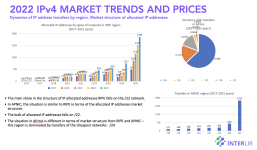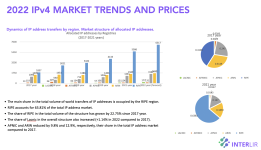pavlosinterlir
New member
Hi guys!
Although I am developing an IPv4 brokerage and rent software platform, it's not an advertising. I really want to discuss the current market situation and get the feedback from market professionals.
These days IPv4 blocks are very expensive, if you have not acquired some 3-5 years ago from RIR, it's rather expensive to buy IPs now. Even /24 will cost around 12k if you go to a broker. It will take more than 6 months (if not more) to get your network from RIPE NCC or other RIR.
My question is : Is it still required for a dedicated server to have IPv4 or you would prefer to use IPv6?
Where do you get new IPv4 blocks? Do you buy them or rent from brokers or platforms such Prefixx, IPXO or InterLIR?
Best regards,
Pavel
Although I am developing an IPv4 brokerage and rent software platform, it's not an advertising. I really want to discuss the current market situation and get the feedback from market professionals.
These days IPv4 blocks are very expensive, if you have not acquired some 3-5 years ago from RIR, it's rather expensive to buy IPs now. Even /24 will cost around 12k if you go to a broker. It will take more than 6 months (if not more) to get your network from RIPE NCC or other RIR.
My question is : Is it still required for a dedicated server to have IPv4 or you would prefer to use IPv6?
Where do you get new IPv4 blocks? Do you buy them or rent from brokers or platforms such Prefixx, IPXO or InterLIR?
Best regards,
Pavel


